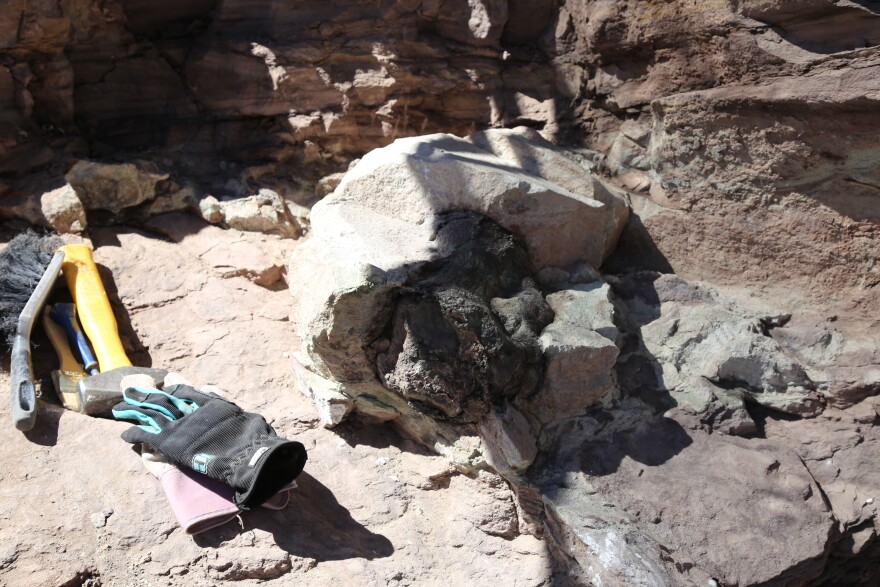WHITE MESA — Just south of Blanding, researchers are excavating seven giant dinosaur vertebrae. They are part of a 70-foot-long diplodocus skeleton that will be on display at the Natural History Museum of Los Angeles County.
Alyssa Bell directs fieldwork for the project, which is spearheaded by Luis Chiappe, the museum's Dinosaur Institute director. Bell leads a team of 12 researchers from around the world, who shout to each other in Spanish over the sound of jackhammers and an electrical generator. The team has been here for four weeks, and they’ve already excavated around 30 bones.
But the most important ones — those neck vertebrae — are still in the ground. Bell explains they have to get them out by the end of the week so preparators will have time to clean and mount the full skeleton for the opening of the museum’s new Welcome Center in 2022.

Bell refers to the diplodocus skeleton as Gnatalie, after the Gnatalie Quarry, where the bones were found. The quarry is a 150 million year old bone bed discovered in 2007 by a team from the Los Angeles County museum. They came to Utah looking for bones from the Jurassic Period to round out the museum’s collection, and state paleontologist Jim Kirkland directed them to San Juan County.

“I knew if we sent someone down there they’d find something good, and without question, immediately they found something exciting,” he said.
The diplodocus is a genus of dinosaur. They had small heads, long necks and tails, and are some of the longest dinosaurs known to ever exist. The Gnatalie skeleton is made up of bones from a few different species of diplodocus. It isn’t particularly rare to find bones from one of these in Utah, according to Kirkland. But Gnatalie is unique for another reason. The bones from the quarry are green, thanks to a mineral present during the fossilization process. Bell says it may be the first green dinosaur skeleton mounted in the world.
“This is very particular to this quarry,” she said. “So once we mount Gnatalie, it will be the green dinosaur.”

Another thing that makes Gnatalie unique is the location where the bones were found. According to Kirkland, the Gnatalie Quarry is on the southwest edge of the Morrison Formation, which is a 150 million year-old riverbed that preserved a lot of dinosaur bones.
“It’s probably the most southern big, Jurassic dinosaur excavated in this part of the world,” he said.

The Gnatalie Quarry is one of many dinosaur bone excavations going on in the state, according to Kirkland. He says Utah is probably setting a record for the number of sites that are currently active.
“You’d look at Utah as being in its golden age [of] paleontology,” he said. “They’re important discoveries happening almost weekly.”
Kirkland estimates that researchers have discovered over 100 new dinosaur species in Utah in the past quarter century. And the paleontological gold rush isn’t slowing down. According to Kirkland, there are a handful of other museums excavating large dinosaur skeletons in the state right now, and teams are constantly looking for new bone beds.
“We don’t know much about the state, as it is,” he said. “There’s so much more to learn.”
Although they will have collected all the bones for the diplodocus skeleton, Bell and her team will return to San Juan County next year. They plan to prospect for bones from the Cretaceous Period, which came after the Jurassic. Kirkland has been working on a Cretaceous site in Southeast Utah, but he says there are more than enough discoveries to go around.






